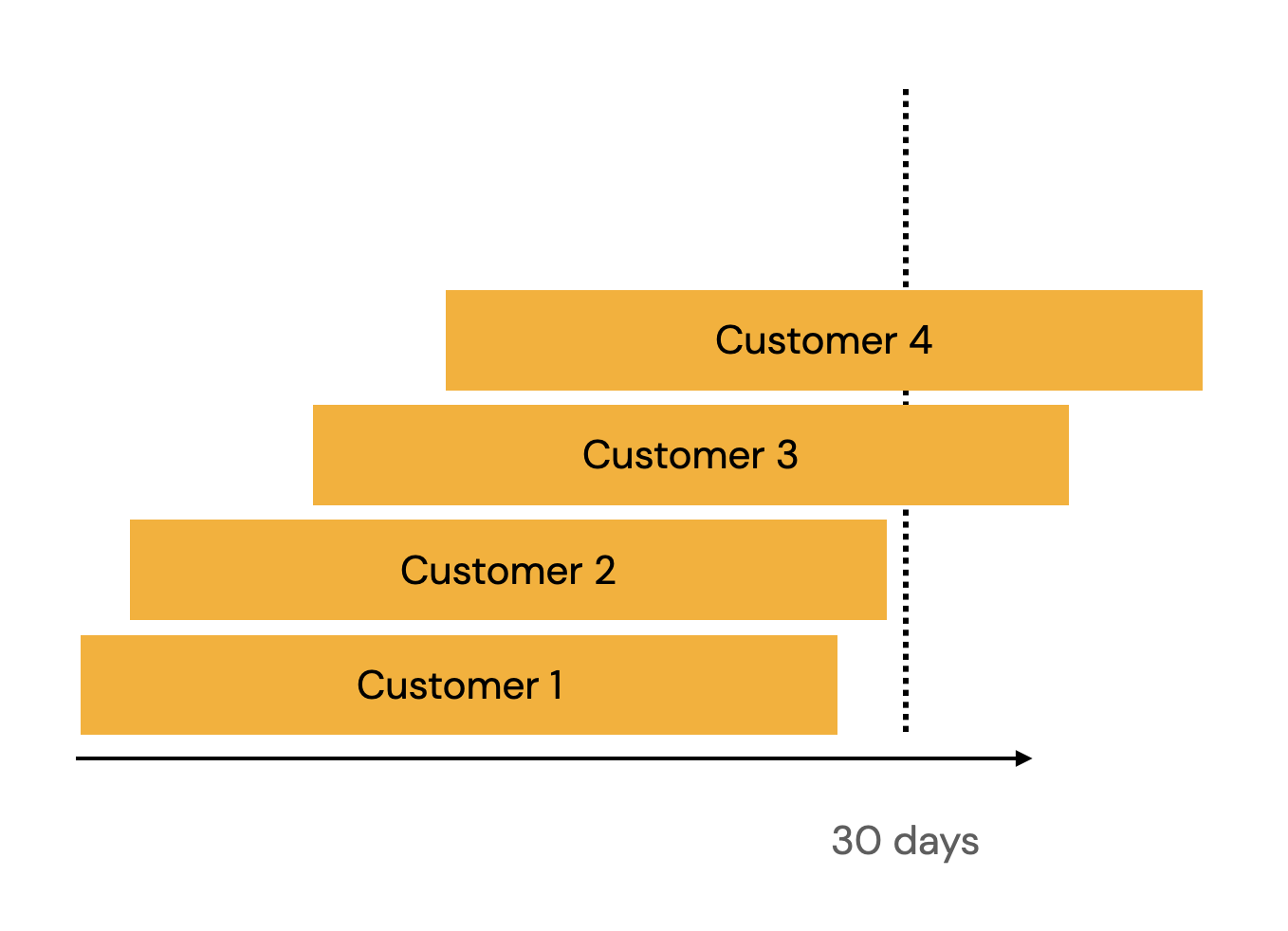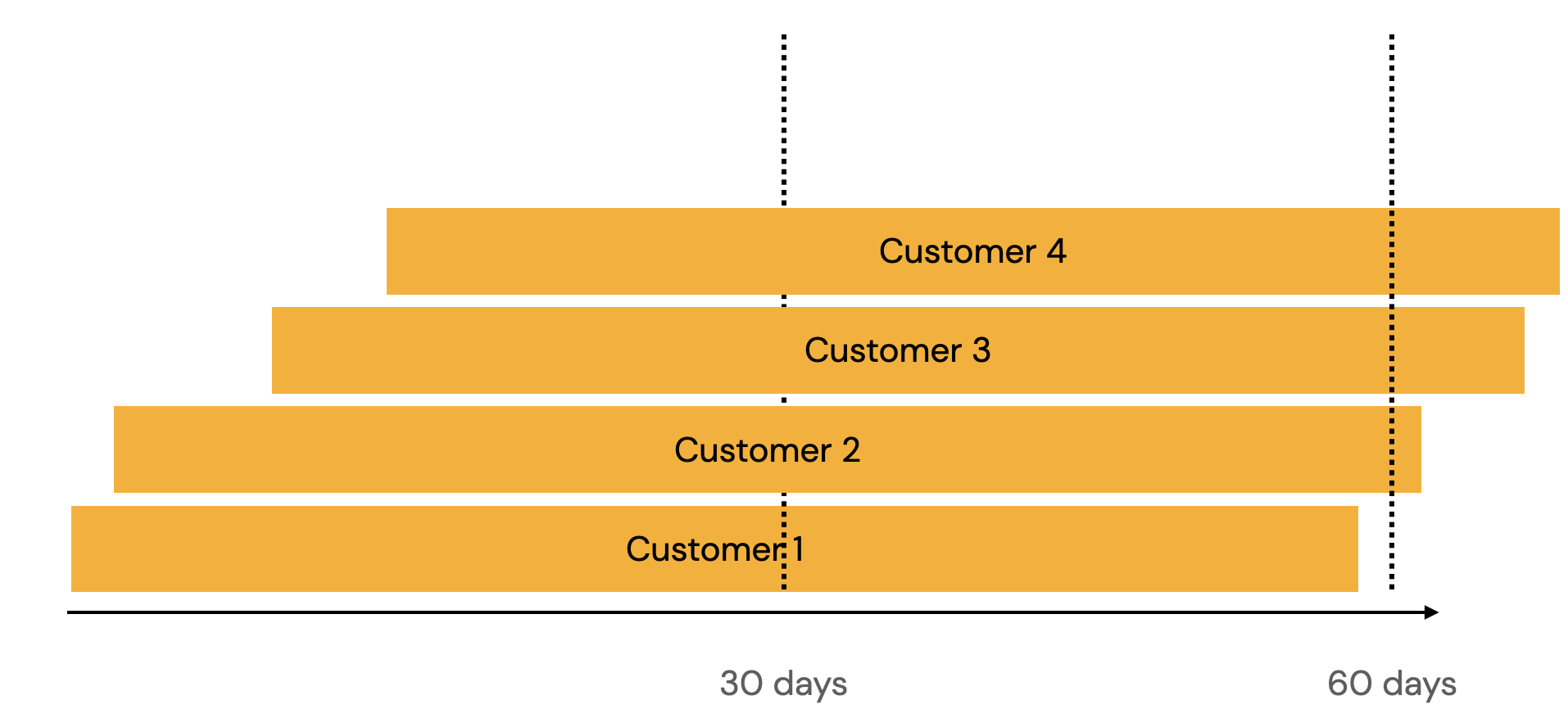 Imagine a startup with 4 customers in the pipeline. The average sales cycle is 28 days. Two of those customers should close this quarter. Two of them, who entered the funnel later in the month, will take longer than 30 days to close.
Imagine a startup with 4 customers in the pipeline. The average sales cycle is 28 days. Two of those customers should close this quarter. Two of them, who entered the funnel later in the month, will take longer than 30 days to close.
If the ACV of the company is $25k, then the business should project $50k in bookings this period & $50k next period (assuming no additional pipeline materializes).
 Suppose sales cycles double in length from 28 days to 56 days. The customer progression chart might look like this. Customer 1 won’t close this period. Nor will customer 2. So, bookings in the current month zero out. Bookings in the second month should be $25k.
Suppose sales cycles double in length from 28 days to 56 days. The customer progression chart might look like this. Customer 1 won’t close this period. Nor will customer 2. So, bookings in the current month zero out. Bookings in the second month should be $25k.
| Scenario | Bookings in Period 1 | Bookings in Period 2 | Total |
|---|---|---|---|
| 28 day sales cycle | 50k | 50k | 100k |
| 56 day sales cycle | 25k | 25k | 50k |
That’s quite a shock to the system from a seemingly small change in sales cycle. 28 more days in the sales cycle halves the bookings in the current period.
Volatility in sales projections erodes confidence within the company. Given the economic conditions, many startups should expect slower sales cycles which introduces volatility into bookings. An executive team looking at a 50% quota attainment may wonder about the health of the sales team, product-market fit, competition, or other fears; even though the bookings challenges might be solely the result of procurement teams adding in a few additional steps in their process.
Healthier pipeline-to-quota ratios are the antidote to this volatility. More customer prospects stifle volatility by ensuring the period’s number doesn’t rely on a single or small collection of accounts.
In the next few quarters, I would expect many bookings charts to show a dip in one or two quarters. Companies who can juice the pipeline-to-quota ratio from the thinner 3x that’s become standard during boom times to 5-7x coverage should enjoy more predictable bookings.